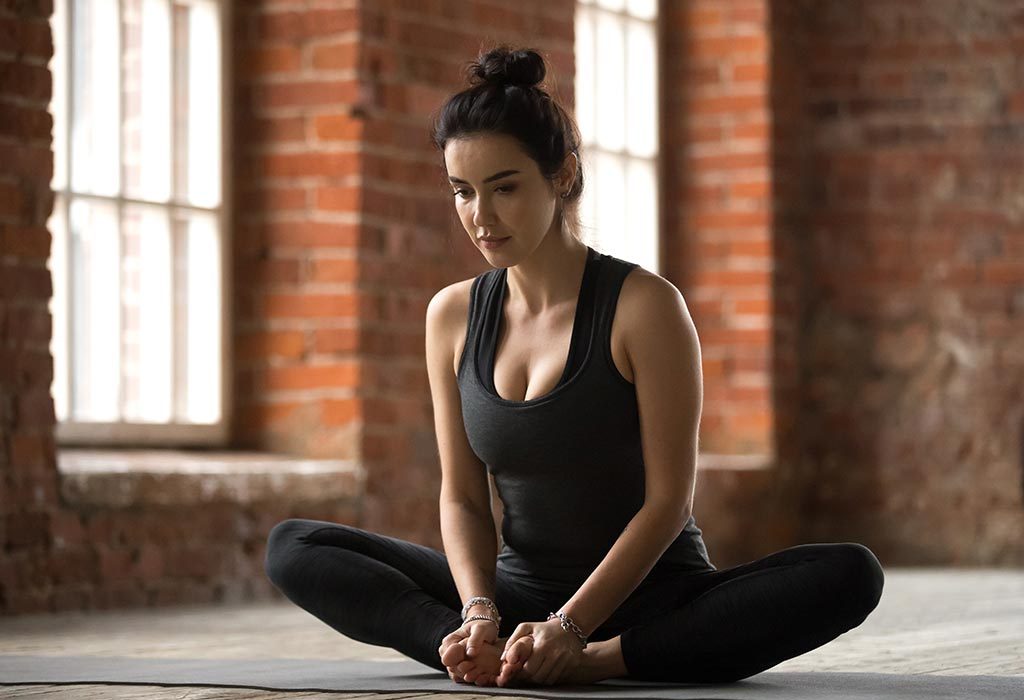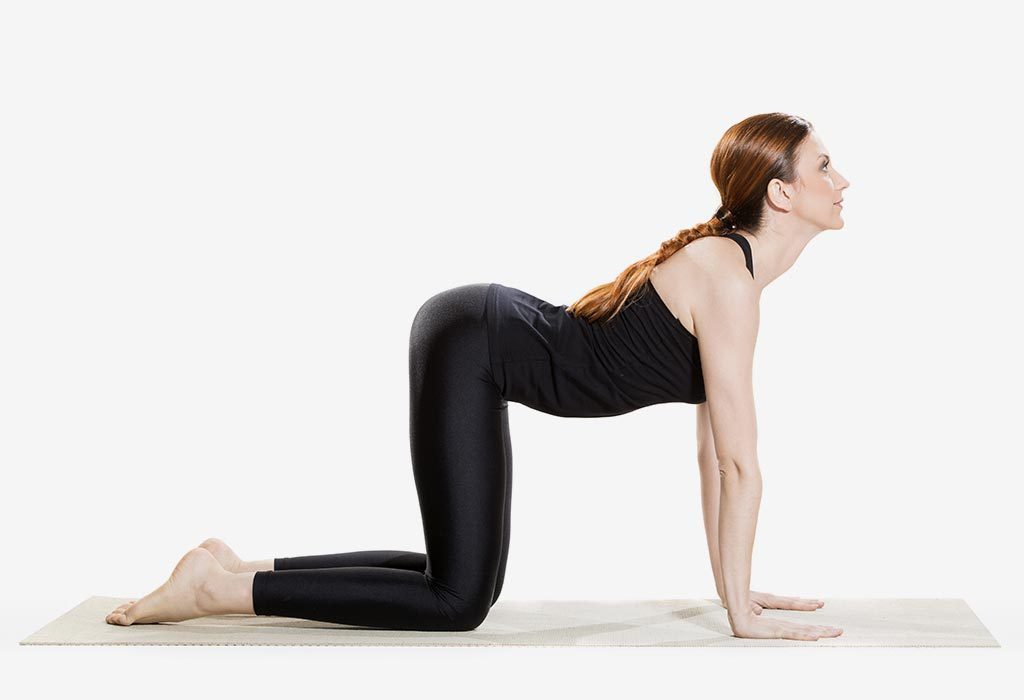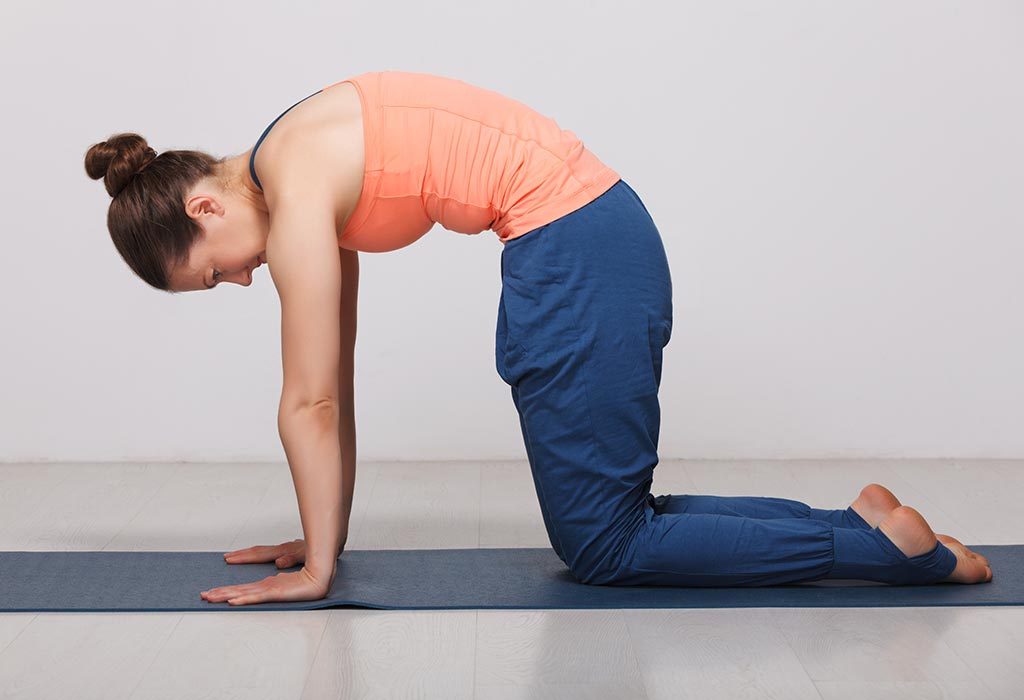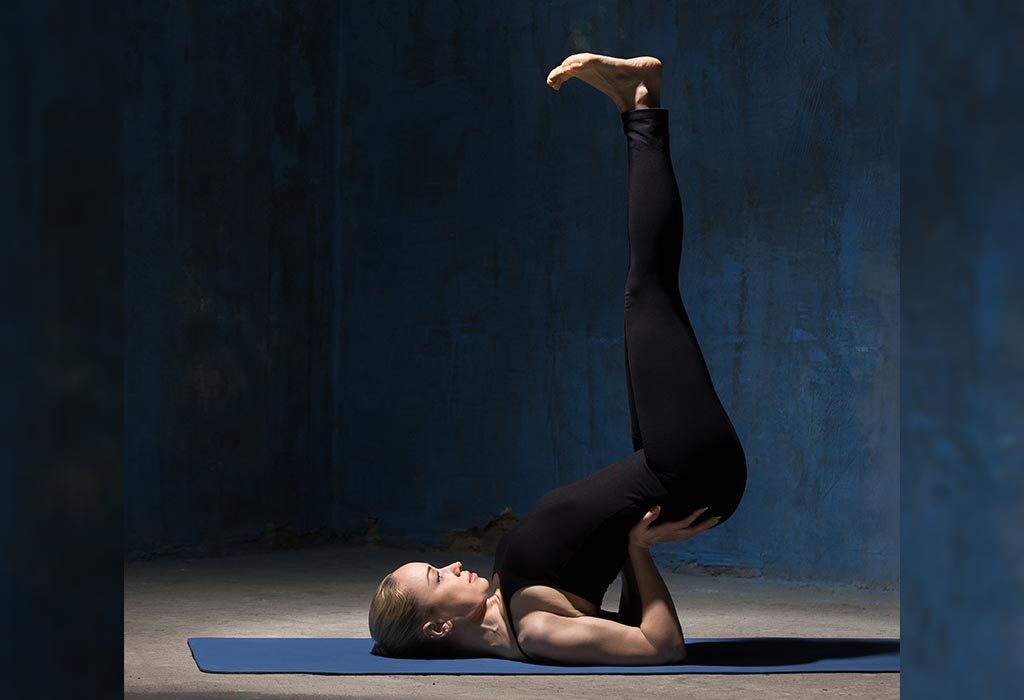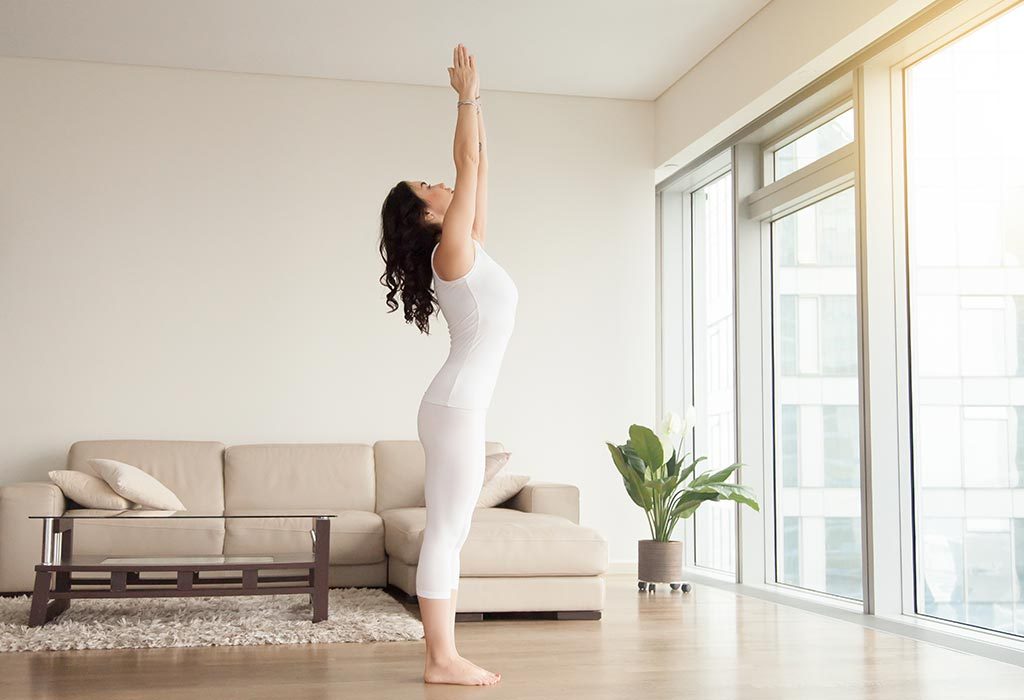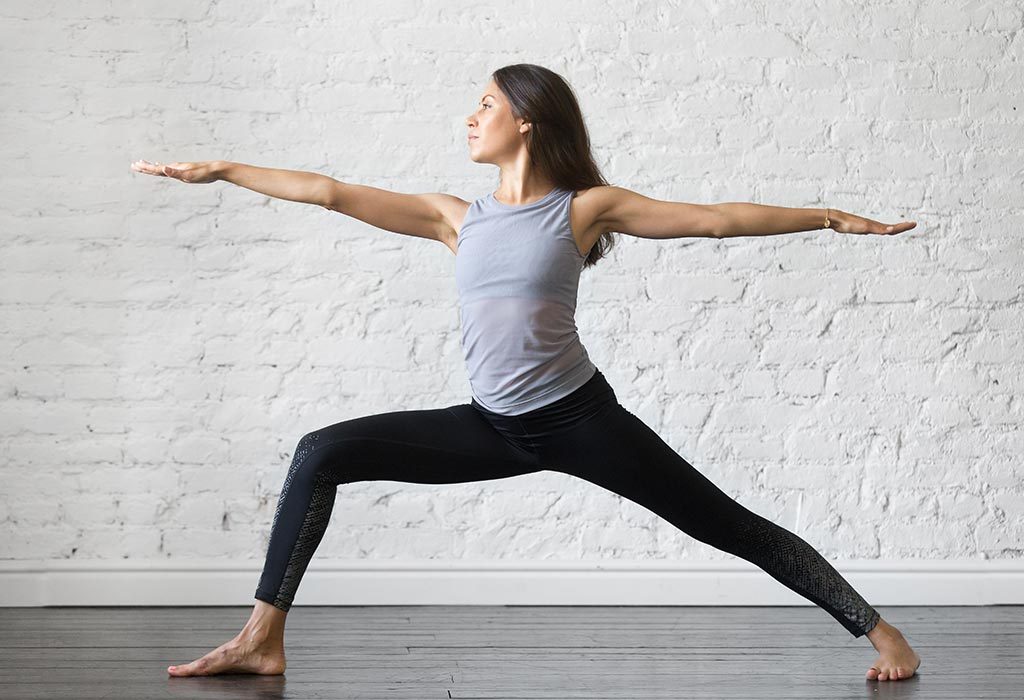In this Article
- Is it Safe to Do Yoga in the First Trimester of Pregnancy?
- Benefits of Doing Yoga during the First Trimester
- Yoga Routine for the First Trimester of Pregnancy
- Yoga Poses/Asanas You Can Try in the First Trimester
- Yoga Poses to Avoid during the First Trimester
- Yoga Tips to Keep in Mind during the First Trimester
When you find out that you are pregnant, obviously you are overjoyed. But, as your pregnancy progresses, you realise that pregnancy is not as simple as it sounds in your head. The first trimester of pregnancy is particularly more painful, as you experience morning sickness, nausea, fatigue, all for the first time. The first trimester is crucial since tissues and organs develop by sapping your energy and building up the foetus from within. You’ll be aware of new life forming inside your womb which might make you anxious, that is why it is important to relax and rejuvenate. This is where yoga comes in; yoga helps you with your pregnancy. Keep reading to learn more about yoga in the first month of pregnancy and the tips best suited for pregnant ladies.
Is it Safe to Do Yoga in the First Trimester of Pregnancy?
Yes, yoga can be safely practised during the first trimester of pregnancy but only under the guidance of a certified yoga instructor who is aware that you’re pregnant and in your first trimester. There are certain asanas and poses which may inhibit the flow of blood to the uterus and cause sprains or muscle spasms, which is why it is important to consult your yoga teacher and doctor before you participate in any intense yoga classes.
Benefits of Doing Yoga during the First Trimester
Here are the benefits of doing yoga during the first trimester of pregnancy:
- Eliminates Unhealthy Habits
It’s pretty much imperative that you have to let go of unhealthy eating habits and lifestyle during the first trimester of your pregnancy for the sake and wellbeing of your developing baby. Yoga helps you let go of toxic emotions and cope better with letting go of unhealthy habits like overeating/anorexia, smoking, alcoholism, and insomnia.
- Provides Relief from Pain
Yoga provides relief from the pain that comes with pregnancy. You’ll be able to cope better with the pain during the three trimesters and by practising breathing techniques, you’ll learn how to stay relaxed and stress-free which is equally important for you and your baby.
- Mind-Body Connection
If you’ve struggled with mindfulness and wanted to learn how to connect with your loved ones, you’ll be happy to know that Yoga will help you with that. You’ll be mindfully aware of the life growing inside you and learn how to let go and live in the moment. You will be emotionally strong and develop a resilient spirit naturally too.
- Physical Activity
It’s important to start doing a physical activity that’s not too hard on your joints and belly during pregnancy. Yoga is perfect as it ensures you get a blend of relaxation plus physical exercise. It’s a win-win scenario for expecting moms!
- Improved Sleep
Insomnia is an issue every pregnant woman faces during her first trimester due to fatigue. Yoga regulates sleep patterns and assists in hormonal imbalances, thus improving your sleep quality and waking you up rejuvenated.
Yoga Routine for the First Trimester of Pregnancy
Some things to incorporate in your yoga routine during the first trimester are as follows:
- Avoid strenuous yoga exercises in the first trimester of pregnancy and do not stretch beyond your natural range of motion.
- Listen to your body and be aware of pains and signals.
- Rest whenever you want.
- Do not practice in hot weather and practice in a cool and breezy environment.
Yoga Poses/Asanas You Can Try in the First Trimester
Some of the safe yoga postures to practice in the first trimester of pregnancy are:
1. Bhujangasana
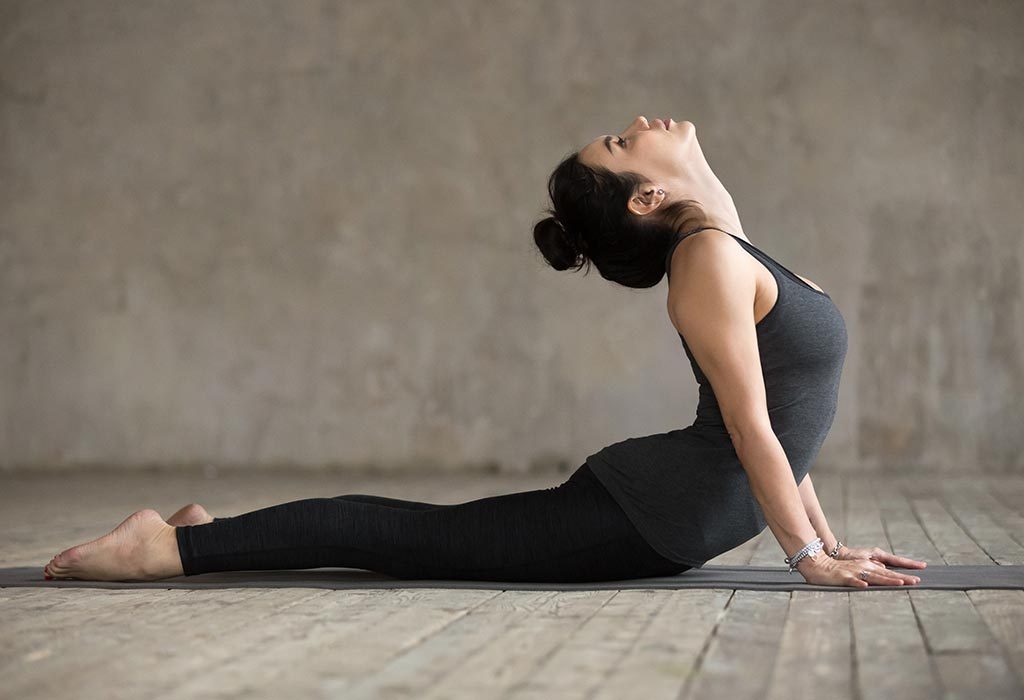
Bhujangasana is geared towards beginner yoga aspirants and mimics the way a cobra resembles when it raises its hood. Don’t push yourself too much and don’t hold for more than 30 seconds on an empty stomach in the early morning.
How to Do:
- Lie on your stomach with your forehead facing the floor.
- Keep your feet together or at hip-width distance and press their tops against the floor.
- Keep your elbows close to the body and place them underneath your shoulders.
- Retract your shoulder blades to the back and draw your pubic bone towards the floor for stability.
- Gently inhale and lift your head and chest off the floor. Relax your shoulders and don’t exert your full bodyweight downwards.
- Exhale and slowly lower yourself back to the ground.
- Do 2-3 rounds of inhaling followed by exhaling down to the floor.
- Hold for 2-3 full breaths when doing this pose and come back to floor position.
Benefits
This pose releases tension in your lower back, improves your mood, and increases overall flexibility.
2. Baddha Konasana
Baddha Konasana is commonly known as the butterfly pose and resembles a butterfly flapping its wings. It is best practised on an empty stomach and is a Vinyasa Yoga pose for beginners.
How to Do
- Sit straight (or as comfortably straight as possible) and stretch your legs outside.
- Inhale gently and bend your knees as your heels are pulled towards your pelvis.
- Lightly press the soles of your feet together and allow your knees to drop gently to the sides.
- Lift the heels towards your pelvis as close as possible and hold your feet using your first finger and your thumb.
- The outer edges of the feet must be planted on the floor and your torso should lengthen across the sternum.
- Hold the pose for five minutes and lift your knees, extend, relax and go back to your original position.
Benefits
This pose helps in reducing fatigue, stimulating your adrenal glands, treating menstrual problems, and improving overall blood circulation in the body.
3. Bitalasana
Bitalasana is known as the ‘Cow Pose’ and here’s how you do it. This pose is usually practised with cat pose and is a beginner level asana.
How to Do
- Get on all fours in a tabletop position and place your knees under your hips.
- The wrist should be in line with shoulders and your head must be in between your hands.
- Gently inhale and lift up your buttocks towards the ceiling, thus opening the chest.
- Sink your abdomen towards the ground and lift your head up.
- Hold for a few seconds, exhale and return to the tabletop position.
- Repeat this sequence five to six times and stop.
Benefits
This pose brings stress-relief, massages the internal organs, and improves blood circulation. It also tones your back and relieves back pain too.
4. Marjariasana
Marjariasana is known as the ‘Cat Pose’ because of the way it resembles a cat stretching its back. It’s an Ashtanga Yoga asana that is geared towards beginners and is held for no longer than 15 seconds on an empty stomach.
How to Do
- Get on all fours on the floor and keep your wrists under your shoulders and your knees below your hips.
- Place your hands on the mat facing forward and keep your shin and knees at a hip-width distance.
- Inhale while bringing your belly towards close to the mat.
- Lift up the chin and chest and stare at the ceiling.
- Widen your shoulder blades and bring them away from the ears.
- Move into the Cat Pose and exhale, while bringing your belly towards your spine.
- Round your back with it facing towards the ceiling. Inhale and return to cow pose.
- Exhale and return to the Cat Pose.
- Repeat a total of 5 to 20 minutes and rest.
Benefits
Purifies your blood, rejuvenates the mind, promotes proper blood circulation and works as an effective stress-buster for pregnant women.
5. Viparita Karani
Literally translates to ‘Legs Up The Wall Pose,’ this one’s rejuvenating for your mind and body. Do this exercise under the guidance of someone. When you are pregnant, always perform this yoga by resting your foot against a wall.
How to Do
- Lie down on the floor, tuck the chin slightly into the chest and gently pull your shoulder blades towards each other while lifting your hips up.
- Support your hips on your hands, open up the chest and gently bring the legs a little towards the direction of your head.
- Close your eyes and breathe, while holding this position for five minutes.
- Release and roll over to a side.
- Breathe again before sitting up.
Benefits
Treats headaches, relieves menstrual cramps, and lessens lower-back pain.
6. Tadasana
Tadasana is a towering pose that resembles that of the mountains. It’s a standing yoga pose for Hatha Yoga beginners and doesn’t require to be practised on an empty stomach.
How to Do
- Keep your hands alongside your body and stand erect with your legs a bit apart.
- Lift your ankles by strengthening the inner arches and visualize white light passing through them.
- Turn your upper thighs inward, flex the tailbone towards the floor and thrust the pelvis forward.
- Look up, breathe in and stretch the shoulders, arms, and chest. Raise your heels with bodyweight on toes, hold for a few seconds, exhale, and release.
Benefits
Some of the benefits of this pose are improved posture, steady breathing, mindful awareness, prevention of flat feet, and improved strength plus mobility in the feet, legs, and hips.
7. Virabhadrasana
Known as the Warrior II Pose, it is inspired by a mythical warrior called Virabhadra. It’s suitable for beginners and is practised on an empty stomach.
How to Do
- Stand in the mountain pose and bring your feet forward opposing each other about 3.5 to 4 feet apart.
- Arms raised and parallel to the floor, face them towards opposite ends, with shoulder blades wide and palms down.
- Turn your right foot slightly more right and your left food approximately 90 degrees.
- Hold for 30 seconds, inhale and come up. Repeat on the other side.
Benefits
The Warrior II Pose energizes the body, promotes balance and stability, improves respiration, builds stamina and focus and finally, enhances blood circulation.
Yoga Poses to Avoid during the First Trimester
The following are the yoga poses which should be avoided during the first trimester-
1. Sun Salutations with Jump-backs
Reason: Due to the physical demands of the body and energy required by the growing fetus, you should take rest and not attempt anything that will drain you out.
2. Locust Pose
Reason: Puts pressure on your belly which is bad for the baby and pregnancy.
3. Boat Pose
Reason: Strains the abdominal muscles and stresses the belly.
4. Plough Pose
Reason: Puts too much stress on your core which is bad for your baby.
Yoga Tips to Keep in Mind during the First Trimester
Keep these tips in mind when practising yoga asanas during your first trimester:
- If you’re new to yoga, start with simple poses which build your flexibility. Use props for times you feel tired.
- Don’t practice backbends, plank pose, or anything that twists or puts pressure on the uterus or belly.
- Relax at the end of a class and make sure to breathe throughout the asanas.
- Modify these poses based on comfort level and physical health and practice under the supervision of a certified teacher.
Keep these tips in mind and practice safely in a quiet and stress-free environment. The key thing is to stay relaxed and enjoy yourself. If you ever feel any discomfort, feel free to stop midway and rest.



